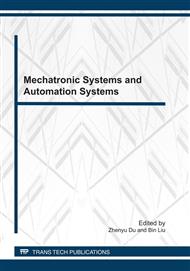[1]
Dieter Fiems, Tom Maertens, Herwig Bruneel. Queueing Systems with Different Types of Server Interruptions. European Journal of Operational Research. 2008, 188(3): 838~845.
DOI: 10.1016/j.ejor.2007.05.010
Google Scholar
[2]
TANAG Yinghui, TANG Xiaowo. Basic theory and application of the queueing: Chengdu electronic science and technology university, 2002, 5.
Google Scholar
[3]
Moshe Haviv, Jan van der Wal. Waiting Times in Queues with Relative Priorities. Operations Research Letters. 2007, 35(5): 591~594.
DOI: 10.1016/j.orl.2006.10.003
Google Scholar
[4]
MohanL. Chaudta-ya, NamK. Kim. A complete and simple solution for a discrete-time multi-server queue with bulk arrivals and deterministic service times: Operations Research Letter, 31(2003)101-107.
DOI: 10.1016/s0167-6377(02)00214-6
Google Scholar
[5]
Cai X, Kloks T, Wong C.K. Time varying shortest path problems algorithm for problems with constraints[J]: Networks, 1997, 29(3): 141-149.
DOI: 10.1002/(sici)1097-0037(199705)29:3<141::aid-net2>3.0.co;2-h
Google Scholar
[6]
J.R. Artalejo, M.J. Lopez Herrero. A Simulation Study of a Discrete-time Multiserver Retrial Queue with Finite Population: Journal of Statistical Planning and Inference, 2007, 137 (8): 2536-2542.
DOI: 10.1016/j.jspi.2006.04.018
Google Scholar
[7]
F.R.B. Cruz, J. MacGregorSmith. Approximate Analysis of M/G/c/c State- queueing Networks: Computer & Operations Research, 2007, 34(8): 2332-2344.
Google Scholar
[8]
Edward EC. Kao. An introduction to stochastic processes, China Machine Press, (2003).
Google Scholar
[9]
L. Chao, W. Henderson, P.G. Taylor. State-dependent Coupling in General Networks: Queueing Systems, 2001, 39(4): 337~348.
Google Scholar


